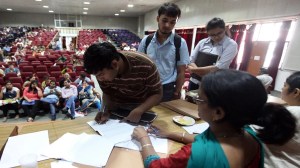- India
- International
Explained: Here are the key takeaways from Oxford’s Covid-19 vaccine error
After trial results of the AstraZeneca-Oxford vaccine, it has now emerged that a mistake in dosing led to the 90% efficacy report. What questions does this raise about this vaccine, and about trials in general?
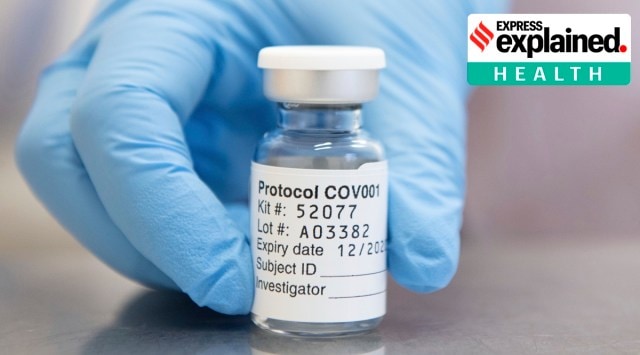 Half a dose followed by a full dose was not the intended regimen. (Univ of Oxford via AP)
Half a dose followed by a full dose was not the intended regimen. (Univ of Oxford via AP)An error in the trials of the AstraZeneca-University of Oxford Covid-19 vaccine, AZD1222, has called into question the way vaccine clinical trials during the pandemic have been handled. This is why it matters, and what needs to be done now.
What was the error?
On Monday, Oxford and AstraZeneca said AZD1222 could have an efficacy up to 90% — when administered in a half-dose followed by a full dose a month later. What they did not disclose initially was that these findings were the result of a mistake. The nearly 3,000 participants in the UK on whom this result was based were never supposed to be given a lower dose in the first place.
The revelation has added to doubts about the way AstraZeneca and Oxford have been conducting these trials, with some scientists flagging the lack of transparency in the entire process.
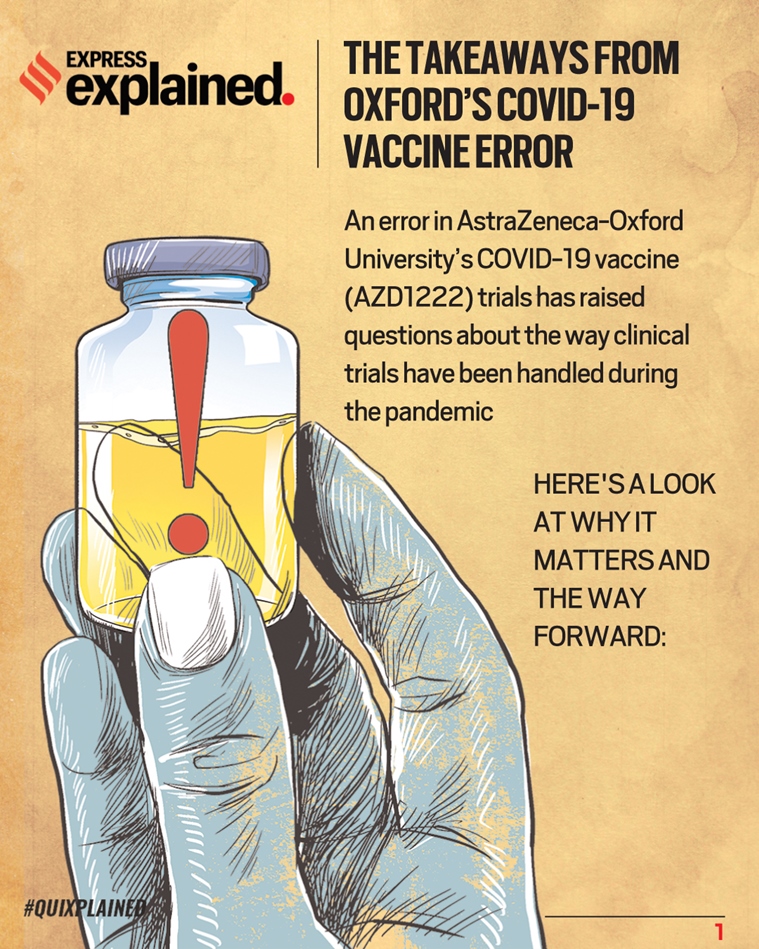 Oxford vaccine error has raised questions about the way clinical trials have been handled during the pandemic.
Oxford vaccine error has raised questions about the way clinical trials have been handled during the pandemic.
“With the exception of the US-based trial, I am not aware of details on how these trials are being monitored. Is there a centralised DSMB (Data Safety and Monitoring Board)? Are they combining the accrued data? They seem to have combined events across Brazil and UK. Why not the other countries?” Natalie E Dean, biostatistician at the University of Florida, tweeted on Wednesday.
“And reporting out a secondary analysis that was not pre-specified (since it seems to be based on a dosing error) is not desirable. If they seek to get the half-dose approved, they should wait until they have a compelling result. Otherwise, we can land in ‘evidence limbo’,” she tweeted.

India trial results not in
The efficacy results of AstraZeneca were based on trials being conducted in the United Kingdom and Brazil. It does not include the trials of the same vaccine being conducted by the Serum Institute in India. The results of the Indian trials are expected to come out in December.
The development makes it uncertain whether regulators like the US Food and Drug Administration would authorise emergency use, with confidence in the development programme having been “damaged”, according to a report in The New York Times.
“We have to see how much of this data (from the low-dose group) is potentially usable for regulatory submissions in the strictest sense, because, my understanding is you cannot use data that is not specified in the protocol. It is likely they notified the regulators, but this is not exactly a ‘per protocol’ or an ‘intention to treat’ analysis, which is the way clinical trial analyses are usually done,” vaccine scientist Prof Gagandeep Kang told The Indian Express on Thursday.
Also in Explained | How far are we from a Covid-19 vaccine now?
 What was Oxford’s vaccine error?
What was Oxford’s vaccine error?
Why did the error happen?
Oxford says that due to a “difference in the manufacturing process” for the vaccine batches used for the phase 3 trials in the UK initially, the doses given to 2,741 UK participants were overestimated, resulting in a half-dose being administered as the first dose.
“We have different ways of measuring the concentration of the vaccine and when it was apparent that a lower dose was used, we discussed this with the regulator, and agreed a plan to test both the lower dose/higher dose and higher dose/higher dose, allowing us to include both approaches in the phase III trial,” the university said. “The methods for measuring the concentration are now established and we can ensure that all batches of vaccine are now equivalent.”
“There are two reasons why these errors could have crept in,” said Dr Amar Jesani, an independent consultant, researcher and teacher in bioethics and public health, co-founder of the Forum for Medical Ethics Society and editor of the Indian Journal of Medical Ethics.
“One is the haste with which the Covid vaccine trials are being conducted during the pandemic… they are trying to compress various stages of vaccine development. The second is that companies are vying with each other to capture the market at the earliest,” he said.
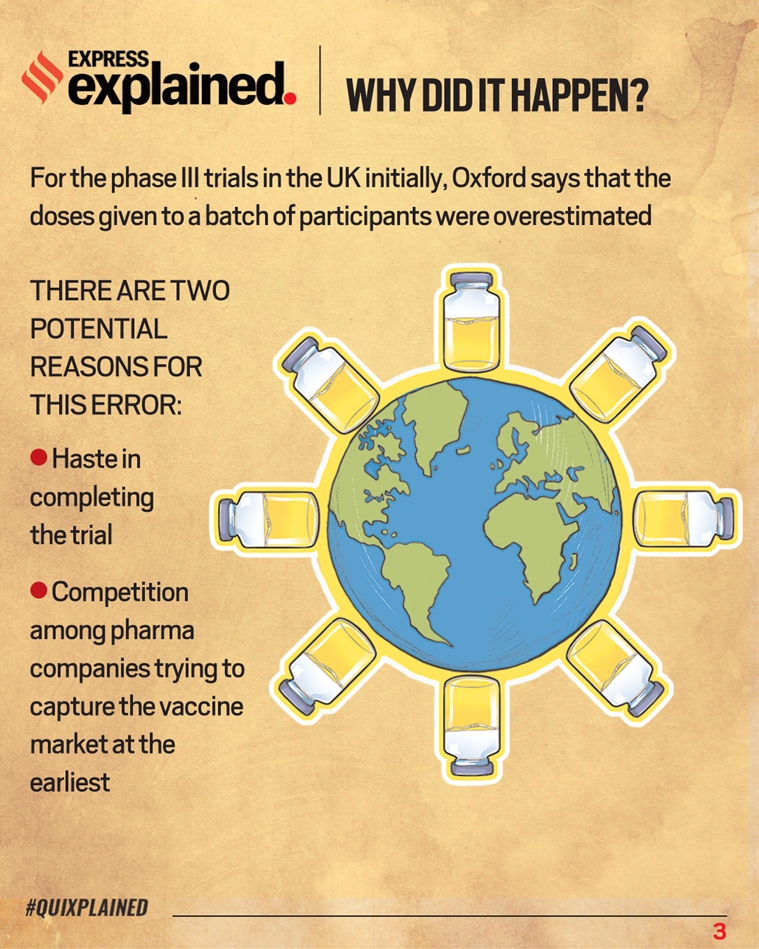 Why the Oxford vaccine error happen?
Why the Oxford vaccine error happen?
What checks and balances are in place for such errors?
In this case, the mistake brought about a potentially positive finding that AstraZeneca intends to study further in the US arm of the trials, but it could have ended badly if the dosing was the other way around.
“In this case, the direction in which the error went was not a tragedy. Overdose has the potential to cause harm. Underdose usually does not,” Dr Kang said.
“In clinical trials, everything is precisely protocolised, and it has to be uniform across all participants in the trial. Normally, you don’t see this level of error happening,” said Dr Jesani.
But protocol deviations are still common in clinical trials, Dr Kang said.
 Oxford vaccine error: What checks and balances are in place for such errors?
Oxford vaccine error: What checks and balances are in place for such errors?
“Wrong labelling of samples, issues with data quality, your freezer breaking down — these are all bound to happen. Even though errors or deviations may or may not make a difference, you would want to stop the study, investigate what is happening and then proceed,” she said.
“Errors happen. The point is that the study protocol is a guidance document that lays out what to do and how and monitoring is an approach to prevent as many errors as possible. In any kind of clinical trial, despite best efforts, it is likely that you will have protocol deviations. You have to record that,” she added.
Also read | Here is the optimal temperature for storage of front-runner Covid-19 vaccines
Should these participants have been removed from the trial?
Given that the error was that of administering a lower first dose of the vaccine, it might be considered unethical to remove these participants from the ongoing trial, according to Dr Kang. “You have recruited these people telling them that your volunteering, in a spirit of altruism, will benefit the public at large. Can you afford to then say, ‘Sorry, but all your effort is wasted because we made a mistake so, now, we are going to stop?’” she said. “You actually don’t know what the right dose is (for this vaccine yet), and this might be turned into an opportunity to understand more about the vaccine,” she said.
Yet, she said, “I do wish that there was way more transparency — maybe that’s too much to ask from Big Pharma, but, in this emergency situation, with misinformation and contention everywhere, being absolutely open by publishing protocols and papers and sharing information in detail, would be much more helpful.” 📣 Express Explained is now on Telegram
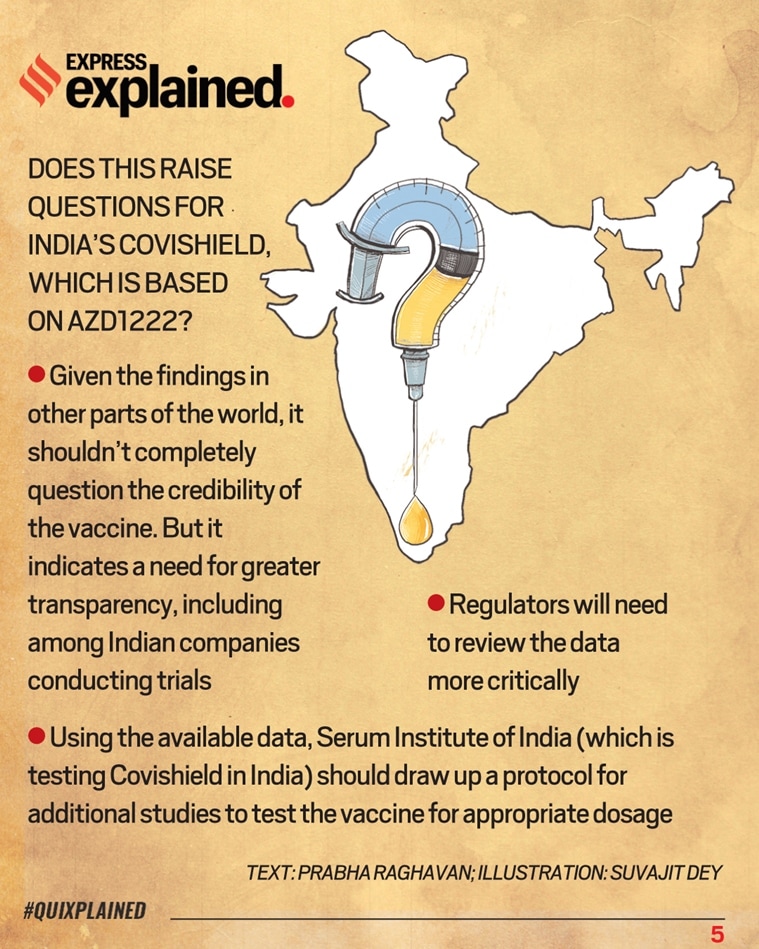 Does Oxford’s vaccine error raise questions for India’s Covishield?
Does Oxford’s vaccine error raise questions for India’s Covishield?
Does this raise questions for India’s Covishield, which is based on AZD1222?
It shouldn’t call the capability of the vaccine completely into question, according to some experts.
“The fact that the arms in the UK and Brazil are coming up with an efficacy above 60% means that this vaccine is working…and we were aiming for 50% in the guidance from WHO, the FDA and the DCGI,” said Dr Kang.
“But we will have to wait until regulators review the data and are convinced this is a vaccine worth having, because it is important to understand that regulators will get much more detail than scientists can read in a scientific journal,” she said.
What is required now is for Serum Institute of India (SII), which is testing Covishield in India, to “quickly” submit a protocol for additional studies that can test this vaccine using half a dose to start with.
“Serum should ask for all of the data from the AstraZeneca study to share with the DCGI and do very quick immunogenicity studies on Covishield to decide on an appropriate dose that it can go ahead with — a low dose would mean we could have double the doses,” said Dr Kang.
At the same time, this incident should also be a wakeup call for more transparency in the way even Indian companies conduct trials.
“We don’t even know at what dosage Serum Institute is testing Covishield over here… I can read the full protocol of AstraZeneca’s clinical trial and make a judgment about an error. Can you do that for Serum Institute of India’s protocol?” said Dr Jesani.
Don’t miss from Explained | Lung fibrosis, Covid-19’s lasting signature
xMore Explained
EXPRESS OPINION
Apr 24: Latest News
- 01
- 02
- 03
- 04
- 05



















